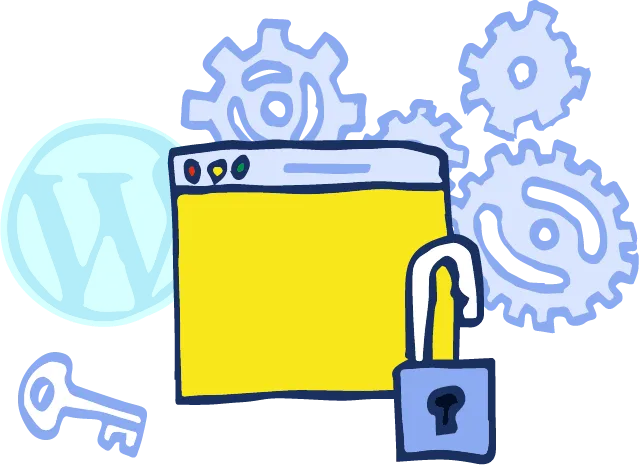How Can the Right Technology Transform Your Daily Hassles into Seamless Experiences?
Consumers are constantly bombarded with technology that's often more frustrating than helpful. Many products on the market promise to simplify our lives but end up being clunky, difficult to use, and disconnected from our actual needs. This creates a significant problem: the very tools designed to ease our lives often become sources of stress and discomfort.

Many customers today are attempting to solve these issues through a mix of trial and error, piecing together multiple devices and software to meet their needs. While some find partial success, most are left with a fragmented experience that falls short of true integration and ease of use. The limitations of these current solutions include:
- Complexity: Many tech products require extensive setup and learning curves.
- Lack of Integration: Devices and software often don’t work seamlessly together.
- Temporary Fixes: Solutions that work today may become obsolete or incompatible tomorrow.
According to a recent survey by Accenture, 64% of consumers report frustration due to the complexity and lack of interoperability of their tech devices (Accenture, 2023). This highlights the need for more user-friendly, integrated solutions.
Imagine a world where your technology understands you, anticipating your needs and seamlessly integrating into your daily routine. The perfect solution should have the following features:
- User-Centric Design: Intuitive interfaces that require minimal learning.
- Seamless Integration: Devices and software that work harmoniously together.
- Adaptability: Technology that evolves with your needs and remains relevant over time.
A study by McKinsey shows that companies focusing on user-centric design outperform their peers by up to 219% over a 10-year period (McKinsey, 2023). This underscores the importance of creating technology that genuinely simplifies and enhances user experiences.

Consider a simple example of creating a seamless integration between two devices using APIs. Let’s say we want to sync a smart thermostat with a weather API to adjust room temperature automatically based on the forecast.
This script fetches the average temperature for the day using a weather API and adjusts the thermostat accordingly. Such integrations reduce user intervention and ensure a smooth, stress-free experience.
Let's address the ever-pervasive 'fear of missing out,' or FOMO, as it's commonly known. It's a modern-day ache, and the right tech has the power to offer solace. Picture this: You're seamlessly connected to updates, events, and experiences that matter most to you, no matter where you are. That's the kind of relief that innovative technology can bring.
Here’s a sample implementation of a notification system that ensures you stay updated:
This script sends an email notification to keep users informed about important events or updates, reducing the fear of missing out.
Consider a fundamental human desire, one that's woven into our DNA throughout the ages: the need for connection and ease. Recognize it, comprehend it, and then harness the cutting-edge capabilities of technology to streamline the process. That's where the true enchantment begins. Many of the technologies we now can't imagine living without began as mere conveniences. With time, they evolved into indispensable tools, alleviating our pains and addressing our needs.

It's about more than just products; it's about creating experiences that resonate and genuinely make a difference in our lives.

Meet Dennis, a seasoned software engineer with 11 years of experience transforming ideas into digital reality. He has successfully guided countless projects from concept to deployment, bringing innovative solutions to life. With a passion for crafting exceptional software, Dennis has helped countless clients achieve their goals.
Click here to learn more
Popular Posts
- How Can Strategic Software Solutions Propel Your Business to the Next Level?
- What is the Key to Startup Success?
- Why Do Some Products Soar While Others Flounder?
- Why Is Consistent Blogging Critical for Your Go-To-Market Strategy?
- Why Do Some Products Stick While Others Don't?
- Why Do Top Engineers Choose Where They Work?
- The Ultimate Solution for Faster, Scalable, and Customizable Web Design Without the CSS Headaches
- Revolutionizing Your Software Experience
- How Can You Overcome Common Pitfalls in Enterprise Application Software Development and Achieve Success?
- Discover the Ultimate Solution to Streamline Your Workflow and Boost Productivity!
Ready to take your business to the next level? Let’s make it happen.
Recommended For You

The Decision Maker’s Playbook to Building Winning Products

Unlock Faster, Safer Websites: Why Businesses Are Choosing Next.js Over WordPress

How to Skyrocket Engagement and Sales with Minimal Viable Experience

Test Ideas Smarter

How a Minimum Lovable Product Delivers Success

How Can You Deliver Software That Wins Customers and Beats the Competition?

De-Risk Your Software Investments: How a Proof of Concept Saves Time, Money, and Headaches

